osmium carbonyl
Modify Date: 2024-01-04 19:38:11
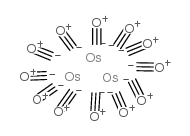
osmium carbonyl structure
|
Common Name | osmium carbonyl | ||
|---|---|---|---|---|
| CAS Number | 15696-40-9 | Molecular Weight | 906.81100 | |
| Density | 3,48 g/cm3 | Boiling Point | N/A | |
| Molecular Formula | C12O12Os3 | Melting Point | 224ºC(lit.) | |
| MSDS | Chinese USA | Flash Point | N/A | |
| Symbol |

GHS07 |
Signal Word | Warning | |
| Name | carbon monoxide,osmium |
|---|---|
| Synonym | More Synonyms |
| Density | 3,48 g/cm3 |
|---|---|
| Melting Point | 224ºC(lit.) |
| Molecular Formula | C12O12Os3 |
| Molecular Weight | 906.81100 |
| Exact Mass | 911.82300 |
| Appearance of Characters | crystal | yellow |
| Storage condition | 2-8°C |
| Water Solubility | Insoluble in water. Slightly soluble in organic solvents. |
Synonym:None Section 2 - COMPOSITION, INFORMATION ON INGREDIENTS
Risk Phrases: 20/21/22 Section 3 - HAZARDS IDENTIFICATION EMERGENCY OVERVIEW
Harmful by inhalation, in contact with skin and if swallowed.The toxicological properties of this material have not been fully investigated. Potential Health Effects Eye: May cause eye irritation. Skin: May cause skin irritation. Ingestion: May cause irritation of the digestive tract. The toxicological properties of this substance have not been fully investigated. Inhalation: May cause respiratory tract irritation. The toxicological properties of this substance have not been fully investigated. Chronic: No information found. Section 4 - FIRST AID MEASURES Eyes: Flush eyes with plenty of water for at least 15 minutes, occasionally lifting the upper and lower eyelids. Get medical aid. Skin: Get medical aid. Flush skin with plenty of water for at least 15 minutes while removing contaminated clothing and shoes. Wash clothing before reuse. Ingestion: Get medical aid. Do NOT induce vomiting. If conscious and alert, rinse mouth and drink 2-4 cupfuls of milk or water. Inhalation: Remove from exposure and move to fresh air immediately. If not breathing, give artificial respiration. If breathing is difficult, give oxygen. Get medical aid. Notes to Physician: Section 5 - FIRE FIGHTING MEASURES General Information: As in any fire, wear a self-contained breathing apparatus in pressure-demand, MSHA/NIOSH (approved or equivalent), and full protective gear. During a fire, irritating and highly toxic gases may be generated by thermal decomposition or combustion. Extinguishing Media: Use agent most appropriate to extinguish fire. Use water spray, dry chemical, carbon dioxide, or appropriate foam. Section 6 - ACCIDENTAL RELEASE MEASURES General Information: Use proper personal protective equipment as indicated in Section 8. Spills/Leaks: Vacuum or sweep up material and place into a suitable disposal container. Clean up spills immediately, observing precautions in the Protective Equipment section. Avoid generating dusty conditions. Provide ventilation. Section 7 - HANDLING and STORAGE Handling: Wash thoroughly after handling. Use with adequate ventilation. Minimize dust generation and accumulation. Avoid contact with eyes, skin, and clothing. Keep container tightly closed. Avoid ingestion and inhalation. Storage: Store in a tightly closed container. Store in a cool, dry, well-ventilated area away from incompatible substances. Section 8 - EXPOSURE CONTROLS, PERSONAL PROTECTION Engineering Controls: Facilities storing or utilizing this material should be equipped with an eyewash facility and a safety shower. Use adequate ventilation to keep airborne concentrations low. Exposure Limits CAS# 15696-40-9: Personal Protective Equipment Eyes: Wear appropriate protective eyeglasses or chemical safety goggles as described by OSHA's eye and face protection regulations in 29 CFR 1910.133 or European Standard EN166. Skin: Wear appropriate protective gloves to prevent skin exposure. Clothing: Wear appropriate protective clothing to prevent skin exposure. Respirators: A respiratory protection program that meets OSHA's 29 CFR 1910.134 and ANSI Z88.2 requirements or European Standard EN 149 must be followed whenever workplace conditions warrant respirator use. Section 9 - PHYSICAL AND CHEMICAL PROPERTIES Physical State: Crystalline powder Color: yellow crystalline powder Odor: Not available. pH: Not available. Vapor Pressure: Not available. Viscosity: Not available. Boiling Point: Not available. Freezing/Melting Point: 224 deg C Autoignition Temperature: Not applicable. Flash Point: Not applicable. Explosion Limits, lower: Not available. Explosion Limits, upper: Not available. Decomposition Temperature: Solubility in water: Specific Gravity/Density: Molecular Formula: C12O12Os3 Molecular Weight: 906.73 Section 10 - STABILITY AND REACTIVITY Chemical Stability: Stable at room temperature in closed containers under normal storage and handling conditions. Conditions to Avoid: Incompatible materials, dust generation, excess heat. Incompatibilities with Other Materials: Oxidizing agents. Hazardous Decomposition Products: Carbon monoxide, irritating and toxic fumes and gases, carbon dioxide. Hazardous Polymerization: Has not been reported Section 11 - TOXICOLOGICAL INFORMATION RTECS#: CAS# 15696-40-9 unlisted. LD50/LC50: Not available. Carcinogenicity: Triosmium Dodecacarbonyl - Not listed by ACGIH, IARC, or NTP. Section 12 - ECOLOGICAL INFORMATION Section 13 - DISPOSAL CONSIDERATIONS Dispose of in a manner consistent with federal, state, and local regulations. Section 14 - TRANSPORT INFORMATION IATA Shipping Name: METAL CARBONYLS, N.O.S.* Hazard Class: 6.1 UN Number: 3281 Packing Group: III IMO Shipping Name: METAL CARBONYLS, N.O.S. Hazard Class: 6.1 UN Number: 3281 Packing Group: III RID/ADR Shipping Name: METAL CARBONYLS, N.O.S. Hazard Class: 6.1 UN Number: 3281 Packing group: III Section 15 - REGULATORY INFORMATION European/International Regulations European Labeling in Accordance with EC Directives Hazard Symbols: XN Risk Phrases: R 20/21/22 Harmful by inhalation, in contact with skin and if swallowed. Safety Phrases: S 28A After contact with skin, wash immediately with plenty of water. S 36/37 Wear suitable protective clothing and gloves. S 37 Wear suitable gloves. S 45 In case of accident or if you feel unwell, seek medical advice immediately (show the label where possible). WGK (Water Danger/Protection) CAS# 15696-40-9: No information available. Canada None of the chemicals in this product are listed on the DSL/NDSL list. CAS# 15696-40-9 is not listed on Canada's Ingredient Disclosure List. US FEDERAL TSCA CAS# 15696-40-9 is not listed on the TSCA inventory. It is for research and development use only. SECTION 16 - ADDITIONAL INFORMATION N/A |
| Symbol |

GHS07 |
|---|---|
| Signal Word | Warning |
| Hazard Statements | H302-H315-H319-H335 |
| Precautionary Statements | P261-P305 + P351 + P338 |
| Personal Protective Equipment | dust mask type N95 (US);Eyeshields;Gloves |
| Hazard Codes | Xn: Harmful; |
| Risk Phrases | 22-36/37/38 |
| Safety Phrases | 22-26-36/37/39 |
| RIDADR | UN 3466 |
| WGK Germany | 3 |
| Packaging Group | II |
| Hazard Class | 6.1 |
| Precursor 6 | |
|---|---|
| DownStream 4 | |
|
Hung, J-T. et al.
Organometallics 15 , 5605, (1996)
|
|
|
Leong, W.K. et al.
Organometallics 16 , 1079, (1997)
|
| MFCD00011149 |
| EINECS 239-789-3 |
| Osmium carbonyl,tri-Osmium dodecacarbonyl |
| dodecacarbonyl-triangulo-triosmium |
| triosmium dodecacarbonyl |
| Os3(carbonyl)12 |
| Dodecacarbonyltriosmium |
| [Os3(CO)12] |
| dodecacarbonyl triosmium |
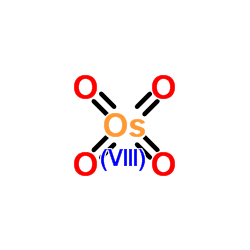 CAS#:20816-12-0
CAS#:20816-12-0 CAS#:201230-82-2
CAS#:201230-82-2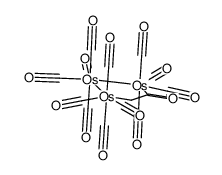 CAS#:85883-28-9
CAS#:85883-28-9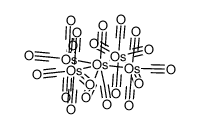 CAS#:78166-65-1
CAS#:78166-65-1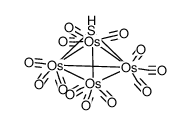 CAS#:82080-90-8
CAS#:82080-90-8 CAS#:133869-39-3
CAS#:133869-39-3 CAS#:7440-31-5
CAS#:7440-31-5![[4-(4-benzoylphenyl)phenyl]-phenylmethanone structure](https://image.chemsrc.com/caspic/132/33090-29-8.png) CAS#:33090-29-8
CAS#:33090-29-8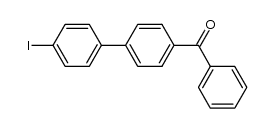 CAS#:1537180-47-4
CAS#:1537180-47-4